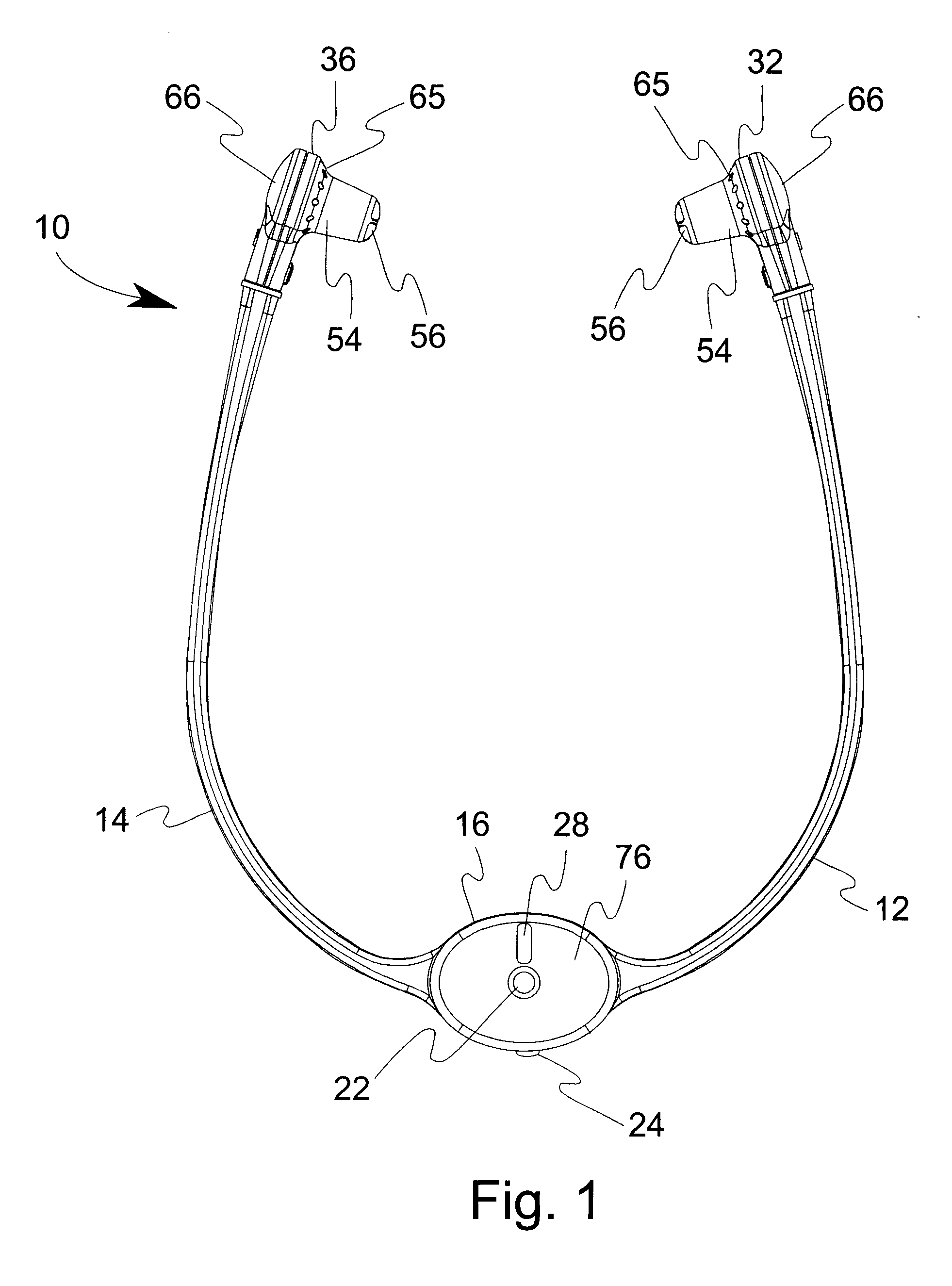Neuro-Electric-Therapy Headset
a neuro-electric therapy and headset technology, applied in the field of surgery, can solve the problems of other medical problems and concerns, the patent specification is notably devoid of any clinical studies supporting the recited treatment, and the prospective user in need of treatment may be reluctant to obtain training, etc., and achieve the effect of effective waveform treatmen
- Summary
- Abstract
- Description
- Claims
- Application Information
AI Technical Summary
Benefits of technology
Problems solved by technology
Method used
Image
Examples
Embodiment Construction
[0039] The invention is a neuro-electric-therapy headset 10 that simultaneously provides coordinated electrical stimulation to a preselected area in the conch of a human ear, for example to the Arnold's branch of the Vagus nerve, at both ears of a patient. The headset configuration enables self-administration of treatment by substantially anyone. The design of the headset automatically locates a pair of tissue interface circuits in proper proximity to administer treatment to the human ear, such as to areas known to stimulate the hypothalamus or to Arnold's branch of the Vagus nerve. The headset provides the automatic location function by suitably carrying the tissue interface circuits, typically at a rearward and downward angle relative to the normal wearing position of the headset. In addition, the tissue interface circuits are carried at the ends of guiding protrusions that follow the contours of the ear to enter the conch area. Finally, the area of each tissue interface circuit i...
PUM
 Login to View More
Login to View More Abstract
Description
Claims
Application Information
 Login to View More
Login to View More - R&D
- Intellectual Property
- Life Sciences
- Materials
- Tech Scout
- Unparalleled Data Quality
- Higher Quality Content
- 60% Fewer Hallucinations
Browse by: Latest US Patents, China's latest patents, Technical Efficacy Thesaurus, Application Domain, Technology Topic, Popular Technical Reports.
© 2025 PatSnap. All rights reserved.Legal|Privacy policy|Modern Slavery Act Transparency Statement|Sitemap|About US| Contact US: help@patsnap.com



